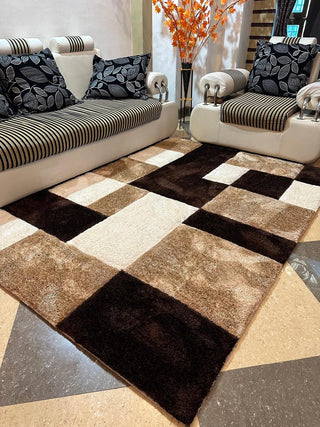The selection of a carpet for living room needs more than just getting a right shade and feel. It is important to have the right measurements so that it fits perfectly, wastage does not occur, and costly mistakes are avoided. Whether you want to put in a complete carpet or just a fashionable area rug, it is important to measure your space properly. Here is a step by step guide on how to measure your living room for the best carpet installation. In case you consider purchasing carpets from internet, precise measurements will help save your cash.
Why Accurate Measurements Matter When Buying a Carpet
Before diving into the measuring process, it’s important to understand why precise measurements are key:
- Avoiding Over or Underestimating: Incorrect measurements can lead to buying more or less carpet than needed, leading to extra costs or leaving areas uncovered.
- Ensuring Proper Installation: Especially with wall-to-wall carpets, the right measurements ensure seamless installation, with no awkward gaps or bunching.
- Saving Money: By measuring your living room correctly, you only purchase the amount of carpet you actually need, preventing overspending.
These points highlight the importance of being thorough when taking measurements, especially if you intend to buy carpet online where returns or exchanges can be more complicated.
Step 1: Gather the Necessary Tools
To measure your living room accurately, you’ll need, a tape for measurement, a notepad and pen to jot down measurements, a calculator for quick math and a helper (if possible) to hold the tape measure for larger spaces. These simple tools will make the measuring process quick and straightforward.
Step 2: Measure the Room’s Length and Width
Initiate by gauging the farthest distances longitudinally and latitudinally from your sitting room. From the longest wall take the distance starting from one corner to an opposite end corner. Write down this length. Until the widest wall is reached, take measurements on each side of the particular room including this measurement. Suppose for instance that the sitting-room possesses a rectangular shape where its length measures 20ft and breadth 15 feet then dimensions are simply 20ftx15ft.
Step 3: Account for Alcoves and Irregular Shapes
Most living rooms are not perfect rectangles or squares. You may have alcoves, doorways, or oddly shaped areas to consider. If your room has alcoves or recessed spaces, measure their length and width separately and add these to your overall measurement. For rooms with an L-shape or other unique layouts, divide the room into smaller, manageable sections (like rectangles or squares), measure each, and then add them together. For example, if your living room has a small alcove that’s 3 feet by 4 feet, you’ll need to include this area in your final measurements to ensure you have enough carpet when you buy carpet online.
Step 4: Calculate the Total Area
Once you have all your measurements, it’s time to calculate the total area. Use this formula:
Length x Width = Total Area (in square feet)
For example, if your living room measures 20 feet by 15 feet, the calculation would be:
20 feet x 15 feet = 300 square feet
If your room has alcoves or irregular shapes, be sure to add those areas to your total:
Main Area: 300 square feet
Alcove: 3 feet x 4 feet = 12 square feet
Total: 312 square feet
This total area is crucial when determining how much carpet you need to purchase.
Step 5: Consider Extra Carpet for Cutting and Seaming
When buying carpet, it’s wise to order a little extra material to account for cutting, seaming, and fitting around obstacles like radiators or fireplaces. Most experts recommend adding 5% to 10% more carpet than your total measurement.
For example, if your total area is 312 square feet, adding 5% would be:
312 square feet x 1.05 = 327.6 square feet
Round this up to 328 square feet. This extra material ensures that your carpet fits perfectly, even if there are unexpected challenges during installation.
Step 6: Choose the Right Carpet Size for Area Rugs
If you’re not fully carpeting your living room and only want an area rug, measuring is slightly different. Measure the area where you want the rug to sit. Common options include:
- Large rugs that anchor all your furniture
- Medium rugs that sit just under the coffee table
- Small accent rugs in specific zones
For a balanced look, leave some space (usually 18 inches) between the edges of the rug and the walls.
For example, if your seating area measures 12 feet by 10 feet, an ideal rug size might be 9 feet by 7 feet, leaving room around the edges.
Step 7: Finalize Your Carpet Choice and Buy Carpet Online
Now that you have accurate measurements, you’re ready to buy carpet online. Carpets typically come in standard widths (12 feet, 15 feet, etc.), so knowing your room’s dimensions helps in selecting the right size. Many online carpet stores offer room planners or measurement calculators that allow you to input your dimensions and visualize the carpet in your living room. Before making a final purchase, consider ordering samples to check the color and texture in your space.
Conclusion
To achieve the ideal carpet fit, it is crucial to measure your living room accurately. By following these steps, you will sidestep typical blunders and guarantee that your carpet enhances your space wonderfully. If you are fully carpeting the place or merely adding a rug on the ground, appropriate dimensions are vital for successful acquisition. You can buy carpets online anytime when it is time for you to choose because of convenience and wide range that they offer.



